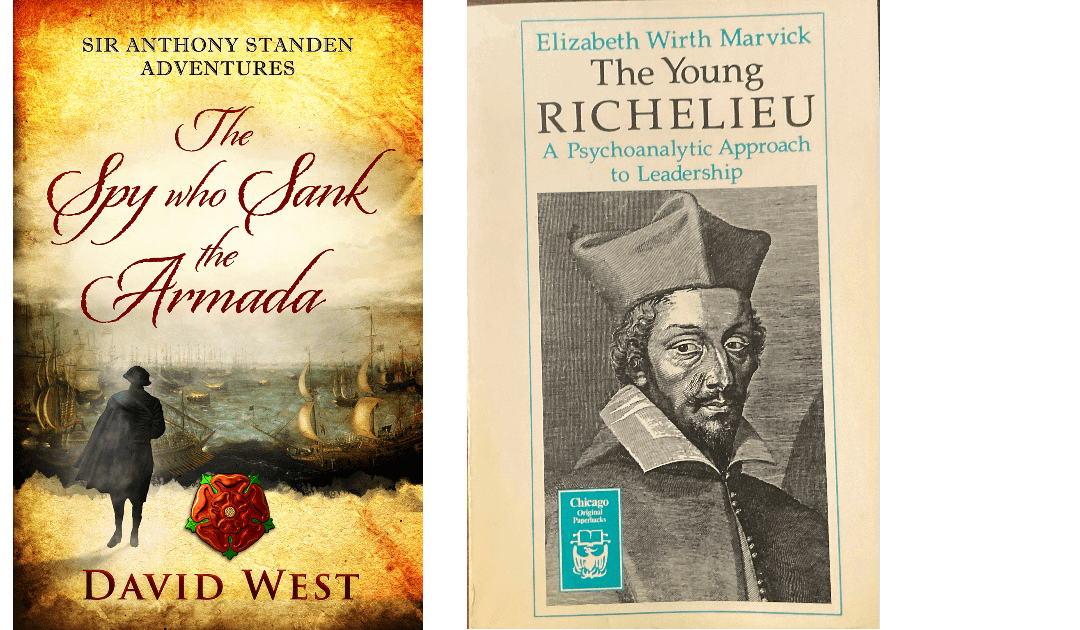Yesterday I received emails from two of my college friends within fifty minutes of each other. The last time Ian had emailed me was almost a year ago. Bob had emailed me in June this year. There was no connection other than they are both friends and would completely independently be in the vicinity in the near future and wanted to meet up. It was a coincidence.
I looked at historical events yesterday to see if there was anything to write about on my blog. The only thing that caught my attention was that on 12th August 1588 Lord Howard, commander of the English fleet, called off the chase of the Spanish Armada around Scotland. There was a connection to my first book in the Sir Anthony Standen Adventures, The Spy who Sank the Armada.
The historical event which caught my attention today is that on 13th August 1624 King Louis XIII made Cardinal Richelieu Chief Minister of France. This caught my attention because I am now 61,000 words into the fifth book in the series, The Fatal Murder, in which Richelieu is a character.
According to Chambers a coincidence is the occurrence of events simultaneously or consecutively in a striking manner but without any causal connection between them. That perfectly defines my two coincidences. There was no causal connection, but they were consecutive and they struck me. Coincidence is in the eye of the beholder.
I’m now wondering how you handle coincidence in a crime story. How many striking consecutive events is a reader expected to accept as coincidence. I’ve done a little research on the internet, and discovered two useful sources. The first is a list of true crimes with major coincidences, starting with the Suzy Lamplugh case. The other is an interview with P.D. James in which she accepts that amazing coincidences do occur in true crime, but that they have no place in fictional crime. That’s good enough for me.

